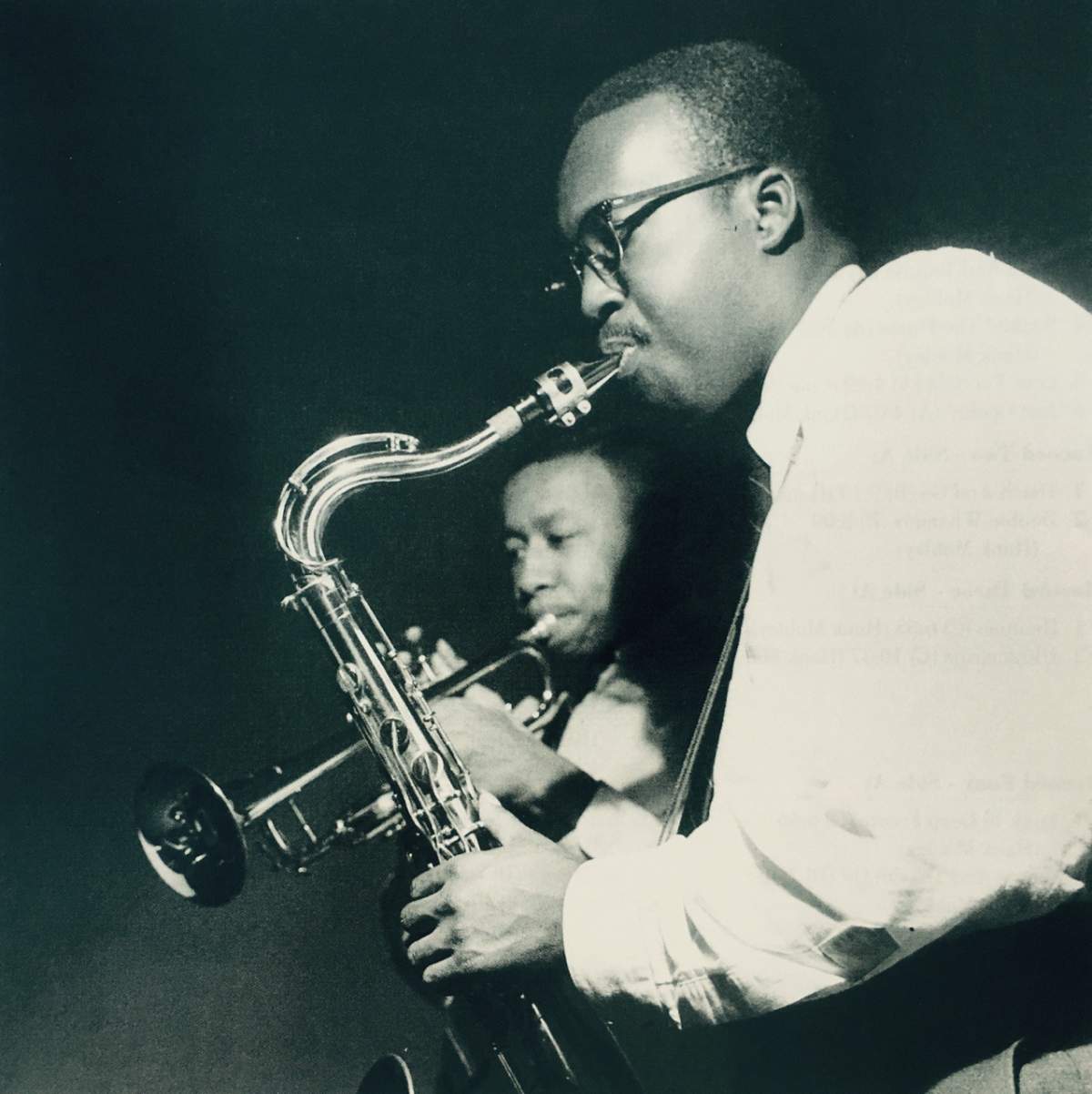
Saxophonist Hank Mobley and trumpeter Lee Morgan crossed paths frequently from the late 1950s through the late 1960s and became leading lights of the era's classic hardbop style, especially on the recordings they made for the Blue Note label. Mobley's so-called "round sound" and Morgan's fiery trumpet-playing created a compelling chemistry that seemed to bring out the best in their respective performances. On this edition of Night Lights we'll hear some of this tandem's music, recorded in the company of Art Blakey, Herbie Hancock, and other jazz greats.
Between 1956 and 1967 saxophonist Hank Mobley and trumpeter Lee Morgan played together on numerous studio dates and on several live recordings, creating a formidable legacy of classic hardbop that influenced the sound of jazz around the world. Mobley was eight years older and had grown up in Newark, New Jersey, while Morgan, still in his teens when he made his recording debut, came from Philadelphia. Mobley had played with Dizzy Gillespie's small group, while Morgan undertook an early tour of duty with the trumpeter's big band, and they both worked with Art Blakey and his Jazz Messengers. Jazz writer John Litweiler once described Morgan as Mobley's
spiritual brother… their complementary qualities are both subtle and immediate. Where wistfulness sometimes tinges Mobley's exuberance, Morgan is wholly extroverted, his solos attracting us with a dazzling shimmer that suddenly becomes the gleam of a knife blade.
Morgan became a jazz star in his lifetime, while Mobley, once branded as the "middleweight champion of the tenor sax" in an era where he was overshadowed by players such as John Coltrane and Sonny Rollins, has gained a posthumous popularity among jazz fans, aided by the wealth of compositions that he left behind. From their first studio encounter in November 1956, here's "Hank's Shout":
Mobley and Morgan each appeared on the other's sophomore outing for Blue Note around the same time as Introducing Lee Morgan, but met up only once in the following year when they joined John Coltrane for Johnny Griffin's saxophone-summit date A Blowing Session. In 1958 they paired up again for Mobley's Blue Note album Peckin' Time, which featured mostly Mobley originals—the saxophonist was a prolific composer—and one Kurt Weill-Ogden Nash song that was becoming a jazz standard:
Mobley and Morgan also found themselves in each other's company in 1959 as members of Art Blakey's Jazz Messengers. Mobley had done a stint with one of the earliest editions of the band, while Morgan was in the midst of what would prove to be an 8-year on-again, off-again run with the quintessential hardbop group. Here they are live at Birdland, performing Mobley's aptly-titled "M and M":
The Mobley-Morgan discography contains a four-year gap, from 1959 to 1963, as both musicians battled drug problems that diminished their participation in the jazz scene, though they each appeared on a number of records. Mobley spent some time as a member of Miles Davis' quintet and made a run of albums for Blue Note such as Workout that some critics and fans consider to be his best. After a nearly two-year long absence from recording studios, Morgan began his comeback on an October 1963 Blue Note date with Mobley that kicked off a prolific period for the trumpeter:
Not long after that session Morgan made a Blue Note album with a title track, "The Sidewinder," that morphed into a hit and led to a flurry of albums for the trumpeter over the next several years. He and Mobley appeared frequently on each other's dates, and in the mid-1960s they co-led a group, but no documentation of its performances has emerged. Their last studio encounter occurred in 1967, at a time when hardbop's popularity was waning, though they each continued to record for Blue Note into the beginning of the 1970s. Morgan's career ended tragically when he was shot to death in 1972 at the age of 33 by his common-law wife. That same year Mobley made his final appearance on record; hampered for years by health problems, he died in 1986 at the age of 55. Since then both musicians have become emblems of hardbop's golden age, and nearly all of their recordings have been reissued. I'll close with two Blue Note recordings from 1965, when Mobley and Morgan were in their prime, beginning with "The Dip":
Special thanks to members of the Organissimo online jazz discussion forum.
More Mobley And Morgan
Workout: The Music Of Hank Mobley (biography)
Delightfulee: The Life And Music Of Lee Morgan (biography)
Lee Morgan: His Life, Music And Culture (biography)
Shorter Lee: Lee Morgan And Wayne Shorter (Night Lights show)
Jackie McLean And Lee Morgan: The Dynamic Hardbop Duo (Night Lights show)









